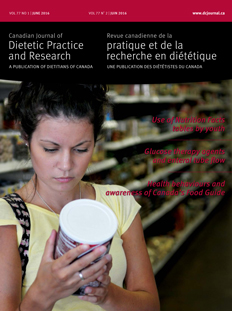Abstract
Purpose: It is commonly suggested that calcium supplementation contributes to constipation; however, little research has explored the effects of calcium supplementation on gut motility.
Methods: In an 8-week, randomized, double-blind, crossover pilot study, healthy females (n = 27, aged 43.0 ± 10.6 years) received a split dose of 500 mg/d of elemental calcium from calcium carbonate or calcium phosphate each for 2 weeks, after a 2-week baseline and separated by a 2-week washout. Participants completed daily questionnaires of stool frequency, Bristol Stool Form Scale (BSFS), and supplement intake compliance.
Results: There were no differences among periods. Mean ± SE stool frequency averaged 1.3 ± 0.1 stools/d in each period. Participants reported 34%, 34%, 37%, and 29% of stools were indicative of slow transit or constipation (BSFS of 1 or 2) during baseline, calcium carbonate, calcium phosphate, and washout periods, respectively. Participants also reported from 6% to 10% of stools as fast transit or diarrhea (BSFS of 6 or 7) during the periods.
Conclusion: This study suggests that neither calcium carbonate nor calcium phosphate, providing 500 mg/d of calcium, affects stool frequency or form. Although stool frequency was normal, the healthy females participating in the study experienced stools indicating slow (constipation) and fast (diarrhea) transit.
Résumé
Objectif. Il est souvent suggéré que la supplémentation en calcium contribue à la constipation. Toutefois, peu de recherches se sont penchées sur les effets de la supplémentation en calcium sur la motilité des intestins.
Méthodes. Dans le cadre d’une étude pilote croisée randomisée à double insu d’une durée de 8 semaines, des femmes en santé (n = 27, 43,0 ± 10,6 ans) ont chacune reçu une dose fractionnée de 500 mg/j de calcium élémentaire provenant de carbonate de calcium ou de phosphate de calcium. Après une période initiale de 2 semaines, elles recevaient un premier type de supplément pendant deux semaines. Puis, après une période d’élimination de 2 semaines, elles recevaient le deuxième type pendant 2 semaines. Les participantes ont répondu à des questionnaires quotidiens sur la fréquence des selles, la consistance des selles (selon l’échelle de Bristol) et l’adhérence à l’apport en supplément.
Résultats. On n’a constaté aucune différence entre les périodes. La moyenne ± l’erreur-type de la fréquence des selles était de 1,3 ± 0,1 selle/jour au cours de chaque période. Les participantes ont indiqué que 34 %, 34 %, 37 % et 29 % de leurs selles révélaient un transit intestinal lent ou de constipation (1 ou 2 sur l’échelle de Bristol) pendant la période initiale, d’apport en carbonate de calcium, d’apport en phosphate de calcium et d’élimination, respectivement. Elles ont également précisé que de 6 à 10 % de leurs selles indiquaient un transit rapide ou une diarrhée (6 ou 7 sur l’échelle de Bristol) pendant ces périodes.
Conclusion. À la lumière des résultats de cette étude, ni le carbonate de calcium ni le phosphate de calcium, selon une dose de 500 mg/j de calcium, n’ont d’incidence sur la fréquence ou la consistance des selles. Bien que la fréquence des selles fût normale, les femmes en santé qui ont participé à l’étude ont eu des selles qui indiquaient un transit lent (constipation) et un transit rapide (diarrhée).



